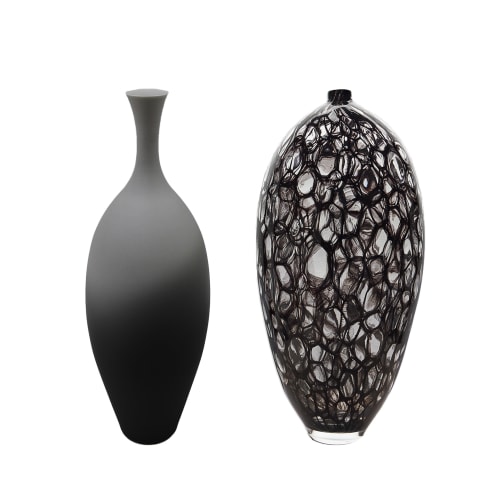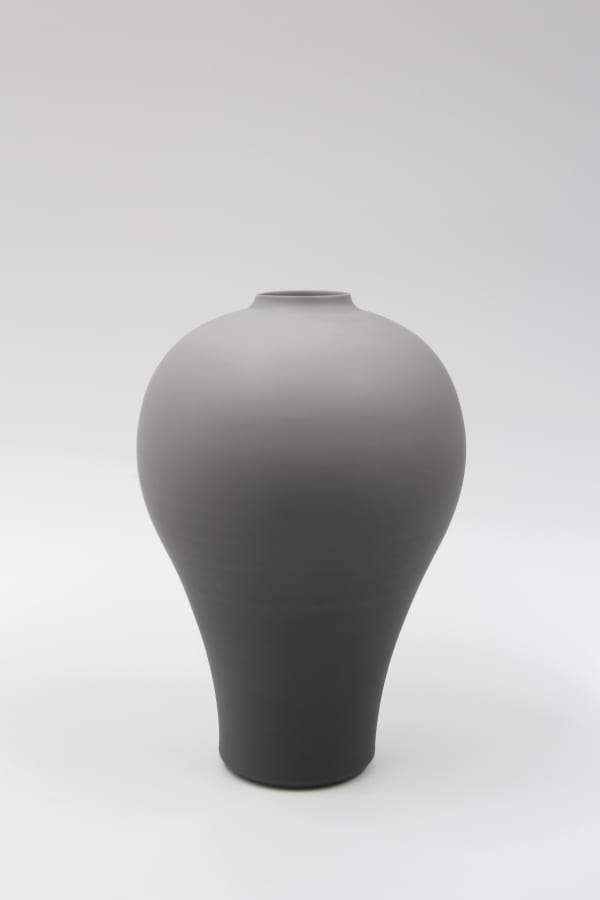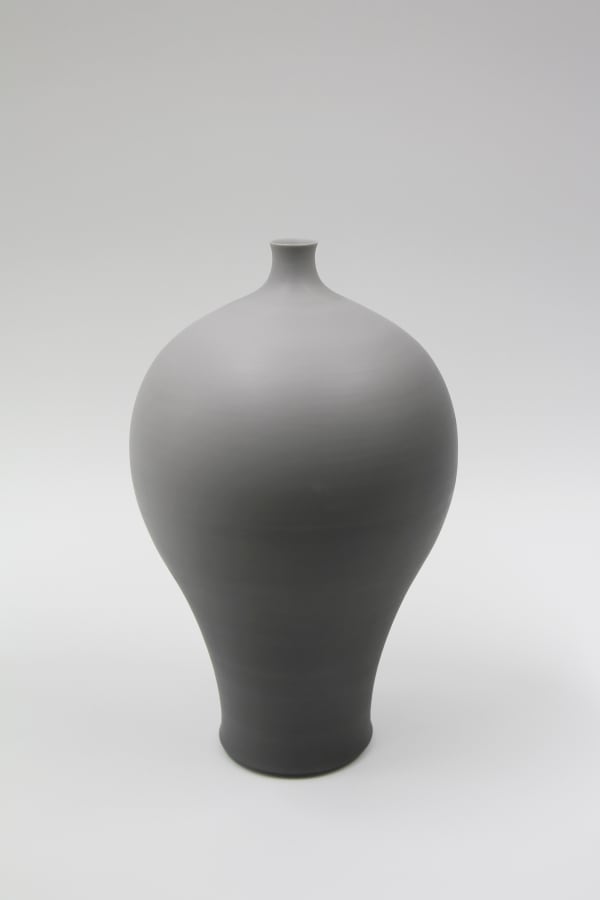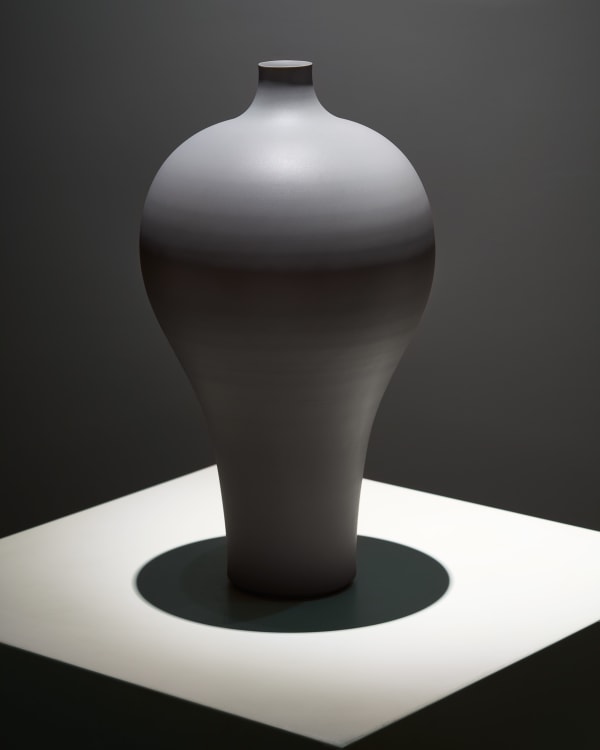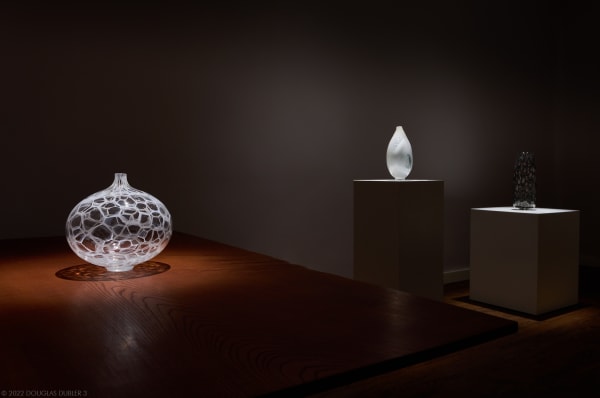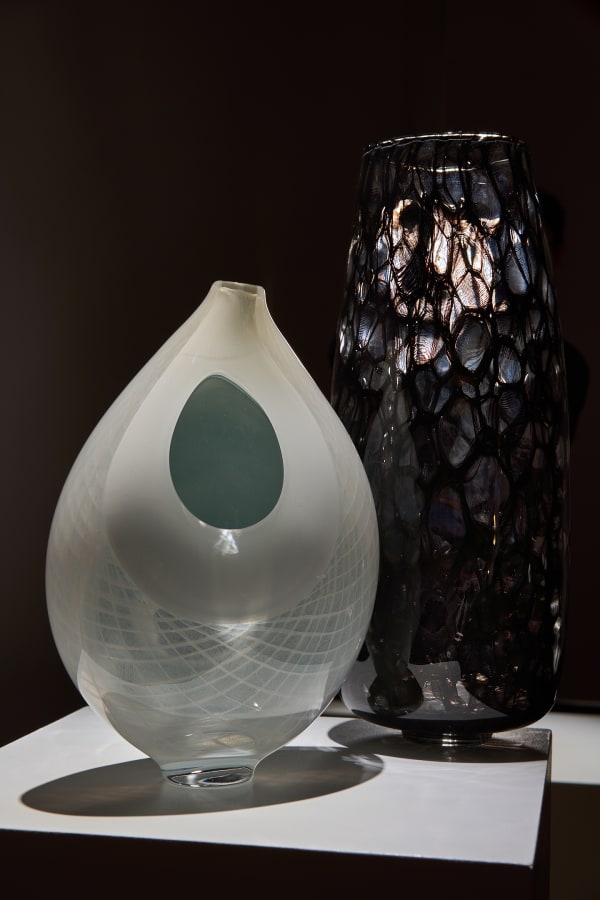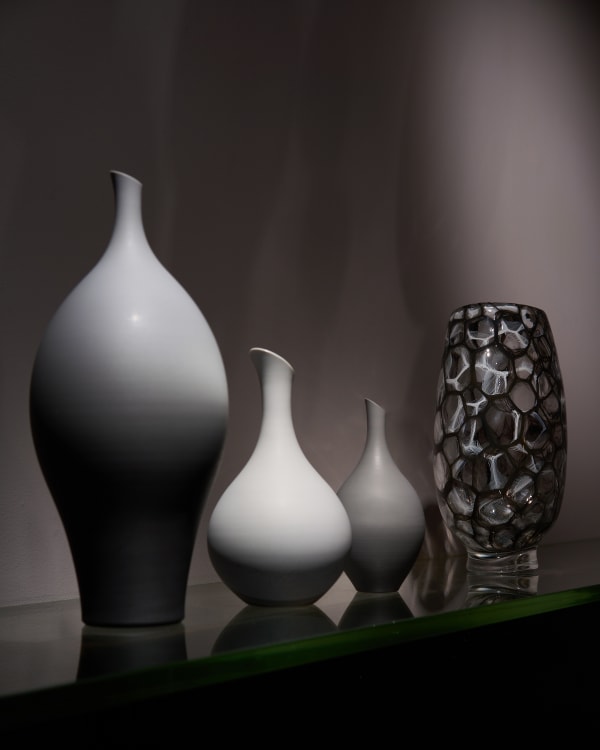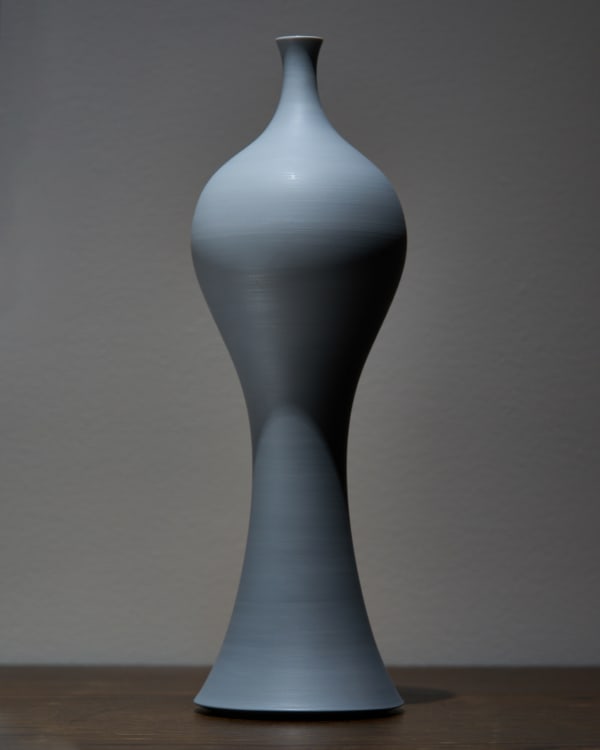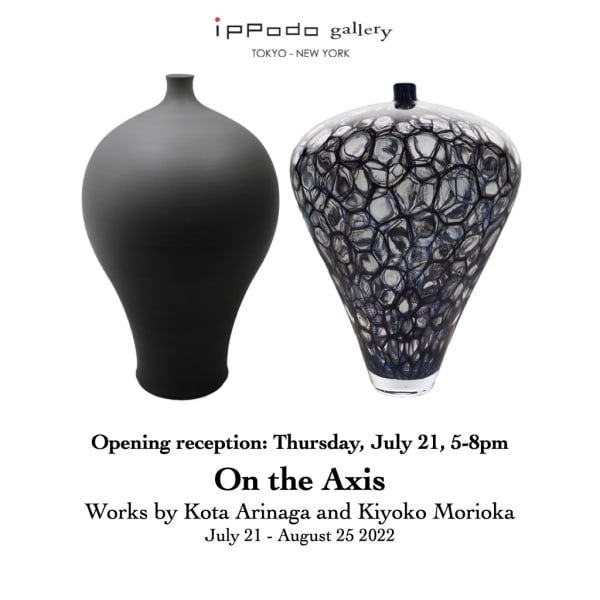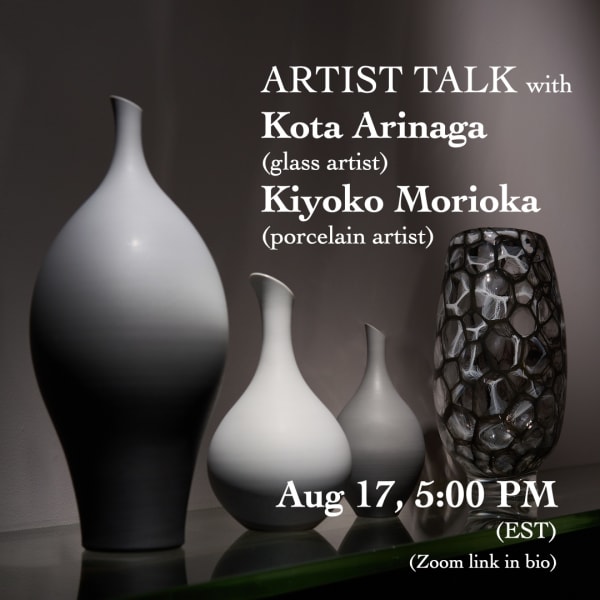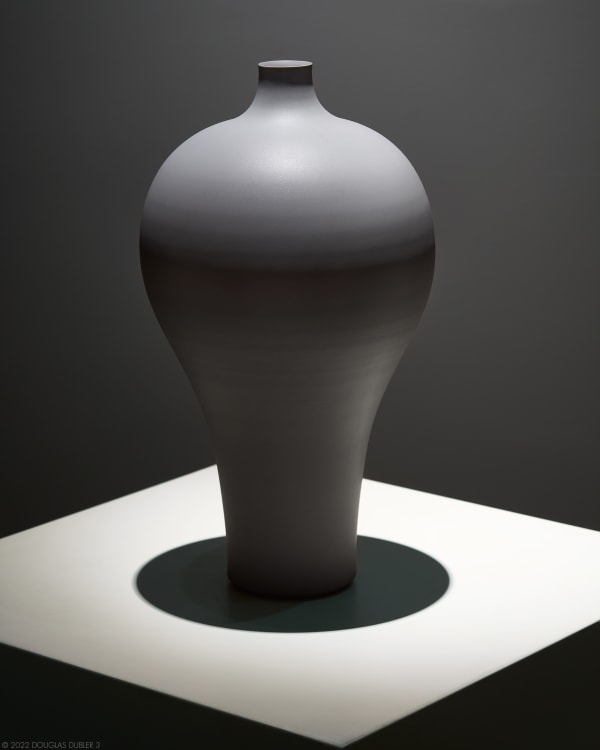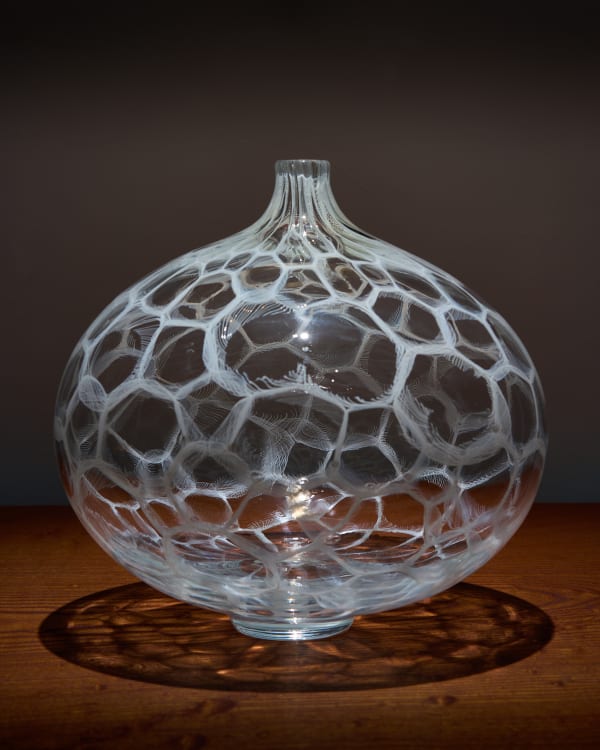On the Axis: Works by Kota Arinaga and Kiyoko Morioka
Kota Arinaga is fascinated by archaeology and expresses the magnificent time axis of textiles through glass.
As a Japanese person born at the tip of the Orient, how can he reconstruct the glass originally introduced through the Silk Road?
Like spinning a thread, colored glass is stretched and thinned, then the base material is instantly transformed into blown glass in a flame.
Kiyoko Morioka is attracted to the cloudy sky of Kanazawa and projects this endless gradation of gray onto porcelain.
She wonders how she can preserve the original matte and soft texture of porcelain before it is covered with glaze.
Sheathing the porcelain, smoking it with rice husks, searing it, then oxidizing it by smoke-firing, she creates a pattern on the surface.
Arinaga's glass plays with the moment, yearning for the grandeur of time, while Morioka's porcelain is smoked over time, dreaming of the sky that changes moment by moment.
Both artists face the materials as if manipulating the time axis, and never stop their journey to delve into the roots of their own birth.
What kind of new time axis will be born when the works of these two artists resonate with each other?
Shoko Aono
Ippodo Gallery is pleased to present On the Axis, Ippodo’s first-ever dual exhibition featuring 15 pieces by glass artist Kota Arinaga and 30 by porcelain ceramist Kiyoko Morioka.
At first glance, the duality between Arinaga and Morioka is pronounced. Arinaga is a male artist, Morioka female. Arinaga works with the immediacy of glass, while Morioka the patience of kiln firing. And yet, both artists are fascinated by the arcs and axes of time, exploring its dichotomies and the dualities in their work. In the stillness of the exhibition, their explorations complement and challenge one another, so that the viewer can reflect on time’s passages and surprises as it warps or rushes, freezes or evolves. Both glass and clay materials are embedded with the passage of time, requiring expert craftsmanship and patience over an extended period to produce a precious work of art.
Kota Arinaga began working with glass to create delicate patterns with lines. The threads of color seemingly stretch weave across the surface, layering like yards of yarn. As they thicken along the glass, the concept transcends the technique: Despite the rapid process of glassblowing, the permanence of form captures and contains the multitudes which have survived the testament of time.
Arinaga seeks inspiration from the traditional Venetian glass technique of 15th century reticella lace, and the ancient glass trade with Syria on the Silk Road. He holds the history of these cloths in his mind as he creates each piece by hand, pushing the limits of blue and green glass pigments. Working in solitude in Noto on the Western peninsula, he concentrates on the natural momentum of the glass while it spontaneously expand, bulging then tautening. In this process, Arinaga celebrates the immediacy of the present craft as much as its origins in the past.
In contrast, growing up in Kanazawa City, Kioyoko Morioka watched the gray urban sky day after day, as the ombre shades laid over her like a blanket. She grew up and changed, but the sky proved constant. Now her works evoke the same feelings of comfort, safety, and warmth provided under the clouds.
Morioka’s porcelain wares are far from sudden; each decision is carefully thought and endures through many processes. They bear strong resemblance to the forms in Giorgio Morandi paintings, smooth and shapely. Unlike the deliberate decorative elements in Arinaga’s bubbling glass, Morioka deviates from the traditional kutani porcelain’s glazes and paints. Instead, she embraces the underlying surface of the kutani clay, allowing the natural surfaces and symmetry to stand alone. The result is exquisitely subtle, with ultra-thin sides punctuated only by ombre hues of grays.
To create her signature grey, smokey hues, Morioka covers each piece with a sheath of rice husks about five times the size of the work, then roasts the husks on the works in the kiln. The oxidizing process and the smoke from the rice husks create unique shadowing patterns that appear gently on the surface.
The porcelain artist is a consummate perfectionist, satisfied with only a few pieces she selects to survive while the rest are discarded. While Arinaga celebrates spontaneity, Morioka cherishes the permanence, picking only a handful of works to last.
Each artist straddles this axis of understanding, perfect opposites to create a seamless viewing experience.
Artist Biographies
Born in Osaka, Kota Arinaga studied abroad in Germany and graduated from Kurashiki University of Science and the Arts in Glass in 2001. In 2017, he opened Kotastudio in Noto. His works are featured in permanent collections such as Okayama Prefectural Museum of Art, Kanazawa Utatsuyama Kogei Kobo, and The Ritz Carlton, Tokyo.
Born in Kanazawa, Kiyoko Morioka began her artistic career studying abroad at Holbek National School of Fine Arts, Kingdom of Denmark. She then continued her education at the Ishikawa Prefectural Kutani Yaki Technical Training Institute. Her ceramist talent blossomed as she became certified as a "traditional craftsman" in the Kutani ware section. In 2016, Kiyoko received her Ph.D. at the Kanazawa College of Art. She is currently an Associate Professor Department of Arts and Crafts at Kobe Design University.
